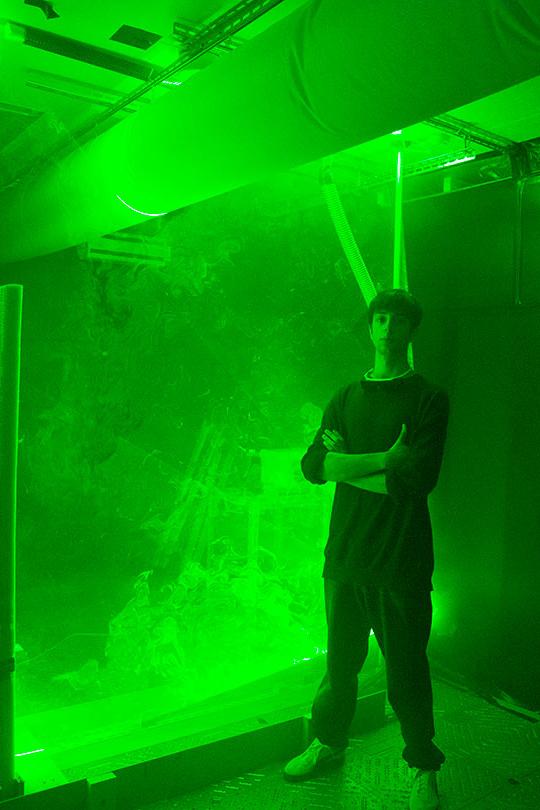Alfred University senior travels to Japan to take part in summer internship program

An Alfred University senior spent much of his summer in Japan as part of an internship program, where he and fellow international students assisted in research projects aimed at improving safety in laboratory environments.
Enrique Stolz, a chemistry-environmental studies double major who grew up in Spain and attended high school in New York City, participated in the University of Tokyo Summer Internship Program (UTSIP). Stolz was one of about 200 applicants to UTSIP program, and one of only 18 students from around the globe accepted. He was able to participate thanks to support from the U.S. Department of State’s Benjamin A. Gilman International Scholarship Program and Alfred University’s Bernstein Funds for Student and Faculty Development.
From May 13 through July 13, Stolz worked full time in the university’s research facilities in the Tokyo suburb of Kashiwa, collaborating with University of Tokyo faculty and graduate students on a project titled “Airflow Analysis in Downflow Ventilation: Impact of Simulated Human Motion.”
Stolz explained that in a conventional ventilation system—in an office building, or school, for example—clean air comes into a room through a vent, usually at the base of a wall, and exits through a vent in the ceiling. “These systems create a lot of turbulence in the room,” he said. While suitable for meeting spaces in an office setting or in a residence, this type of ventilation system can be unsafe in a laboratory environment, where in some cases hazardous substances like chemicals are being used.
Downflow ventilation systems—in which clean air enters the room through a vent in the ceiling and eventually, after moving about the room, exits through an outflow vent in the floor—are currently used in laboratory settings, such as in “white rooms,” Stolz said, but they tend to be expensive and aren’t very energy-efficient. “High-end (downflow ventilation) systems in white rooms require large volumes of air and can be intrusive in a research environment,” he explained.
Stolz’ research project studied how a downflow ventilation system being developed by the University of Tokyo—where clean air enters a room from a cylinder spanning the length of the ceiling and flows directly downward into multiple vents in the floor—would be better suited and safer for research environments such as chemical laboratories.
“Downflow ventilation systems create a linear flow of air, which results in a cleaner lab environment,” he said, explaining that while a traditional ventilation system allows particulates in the air—which can be hazardous in a lab setting—to disperse throughout a room, taking longer to be filtered out, the downflow system carries those particulates out more quickly and efficiently.
Stolz used his knowledge of engineering and aptitude for building—he is part of the woodworking club at Alfred University—to design and construct a “rail system,” in which a panel was placed on a cart that traveled on rails throughout a room, simulating human movement. The room was filled with smoke, and lasers were used to highlight how the smoke moved when the panel passed through it, “allowing us to visualize the air.”

Enrique Stolz, an Alfred University senior, stands in a room he used to test airflow caused by human motion. As a participant in the 2024 University of Tokyo Summer Internship Program, his analysis was part of a research project studying downflow ventilation systems in a laboratory environment.
Stolz analyzed the data using a technology called Particle Image Velocimetry, which records airflow dynamics. The analysis allowed researchers to see the direction air flows in a room fitted with downflow ventilation as a person moves about.
At the end of the internship, Stolz gave a final oral presentation of his research findings to faculty and other students who participated in the program and received positive feedback from his supervisors. He will return to Japan for the Asian Conference on Safety and Education in the Laboratory (ACSEL), scheduled for Nov. 28-29 in Fukuoka. There he will give a presentation on his UTSIP research project.
